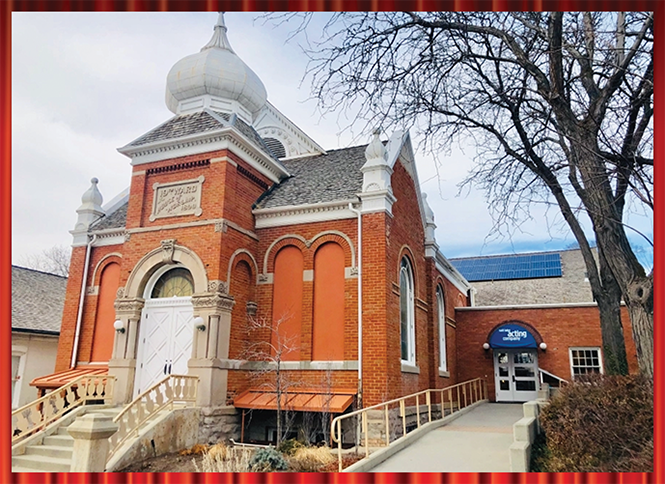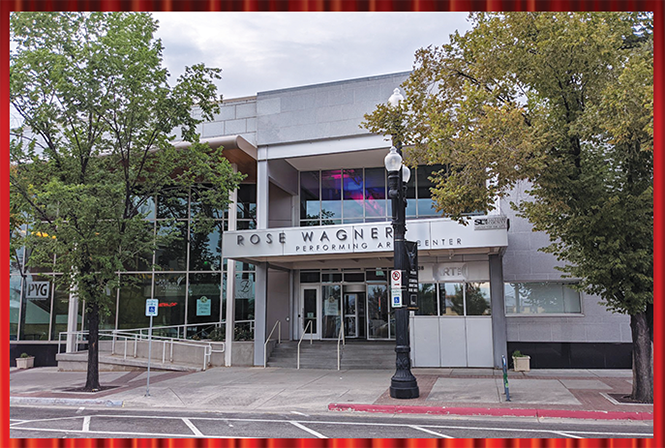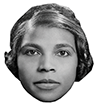Jesse Nepivoda is feeling as pleased as Punch. A professional actor and playwright, he has been working around Utah since 2016 in modern stage productions by such theater groups as Pygmalion Productions, Sackerson and the Utah Repertory Theater Co.
"I think the [theatrical] opportunities in Salt Lake are preposterously amazing," Nepivoda remarked. "You have companies [that] are doing seasons of wholly original work. For a city population of Salt Lake's size, that's practically unheard of, in my experience."
Nepivoda is eager to allay the impression that Utah theater only amounts to touring Broadway musicals and the Utah Shakespeare Festival.
"Anybody who thinks that is not informed of what's really out there," he stressed, "There's really interesting [theatrical] work out in the city—you just have to know it exists and then try to track it down."
Having been involved with theater since high school, Nepivoda has neither shaken the initial terror of being on stage nor the thrill he feels when the endeavor has been successful.
"The art form really breeds empathy in people," he contended, for in a pervasively alienating modern culture, any degree to which performers and audiences can feel human connection is important.
"It absolutely matters when you get it right," he said.
As important as this craft is to the community and as deeply as our theatrical roots extend, City Weekly presents to you a story—in three acts, of course—about where these roots came from. With so much to enjoy on our local stages, we would be remiss if we neglected to appreciate how we got to this point.
There is an endless cast of characters awaiting their cue in this playhouse of memories, and only some can be singled out due to the limitations of our performance space. We hope you enjoy the presentation.
Act I: Seeds of Tradition
At the rise of our curtain, we see Jacksonian America at odds with itself about the theater. While it had long attracted an audience, live theater of that day carried a stigma of moral degeneracy, particularly within religious circles.
But bucking this trend was a denomination of recent vintage: The Church of Jesus Christ of Latter-day Saints.
"The Latter-day Saints were, in 1844, the very first English-speaking religious body in North America to sanction theatre as an activity appropriate for its parishioners to both attend and produce," wrote Lee Krahenbühl in a 2020 article for the John Whitmer Historical Association Journal, "Other American faith traditions would not follow suit for another 40 years."
Krahenbühl, a professor of communication at Stevenson University in Maryland, cited one person as particularly influential in the development of theater within the LDS community. Thomas A. Lyne (1806-1890)—a noted tragedian of the day—toured the burned-over district of New York during the religious revivals of the Second Great Awakening and joined the Latter-day Saint movement, primarily because of its acceptance of his craft.
During his stay among the Mormons, Lyne acted as theatrical director and elocutionist for a company of players in Nauvoo, Illinois. He parted ways with the Mormons, but his lessons had taken root.
Early Backdrops
We transition our scene now to the Territory of Utah, where Latter-day Saints have relocated in successive waves beginning in 1846.
Live theater for this community formally began in the early 1850s, when a group of men and women called the Deseret Musical and Dramatic Association produced the melodrama Robert Macaire and the farce Dead Shot under the sylvan roof of the Old Bowery on Temple Square. Participants like Mercy Tuckett (1833-1863) were even called on a formal "mission" to perform on the stage.
Mail orders were slow, and paper was scarce, observed Ila Fisher Maughan in the book Pioneer Theatre in the Desert, so producing plays in those days was an ordeal in itself.
"Stage settings, properties and costuming were of necessity improvised," Maughan wrote, "and at times so much so they required imagination to make them at all adequate, yet ... theatrical offerings in the Bowery were enjoyable even though the stage was nothing more than a platform."
Before too long, it became apparent to Salt Lake's Latter-day Saints that a more permanent location would be needed for their theatricals. By the start of 1853, they completed an adobe Social Hall at 41 S. State.
With a stage size of 20 feet by 40 feet and a seating capacity of 300 people, the Social Hall—while small in size—served as the community center for theater, banquets, dances and even sessions of the Territorial Legislature. The house orchestra was directed by Italian immigrant Domenico Ballo (1805-1861), a former bandmaster at West Point.
The Utah War of 1857 signaled a diminishment of Social Hall activities, but even with the alarms and incursions of incoming soldiers, Utah theater continued apace. [Editor's note: Remnants of the Social Hall are preserved in the underground breezeway between Harmons City Creek and City Creek Center].
Among the soldiers at the newly established Army post of Camp Floyd (in present-day Fairfield), the Military Dramatic Association was established and operated out of the Camp Floyd Theatre. A German singing group called the Germania Singing Club also formed at the camp and performed on its stage.
Bowring's Theatre
The Utah War ends, and a different scene now unfolds before our eyes.
A new company of local actors called the Mechanics' Dramatic Association began staging plays in the ground floor of Henry Bowring's (1822-1906) house on 100 South between 300 East and 400 East. Operating with an intimate seating arrangement, "Bowring's Theatre"—as it came to be known—produced farces and melodramas, the works of Shakespeare as well as those of John Tobin.
"It was too small to take care of the increasing number of patrons seeking admission," wrote George D. Pyper in his book The Romance of an Old Playhouse, "but it filled its niche in the early theatrical history of Utah."
Brigham Young reportedly caught a performance at Bowring's Theatre, and it was there that he declared his intention to have a first-rate theatrical venue erected for the city. Construction began for the new building on the corner of 100 South and State Street in July of 1861; by March of the following year, it was ready for public use.
The Salt Lake Theatre
Because of its historical impact, we will now direct some accent lighting on the Salt Lake Theatre for a moment. It was designed by architect William Folsom with a seating capacity of 1,500 and an interior patterned after London's Drury Lane Theatre. Opening with James Planche's comic drama The Pride of the Market and the farcical State Secrets, the Salt Lake Theatre's debut season featured a new playbill almost every week.
"Dubbed the 'Cathedral in the Desert,'" wrote Ann Engar for the Utah History Encyclopedia, "the theater became a neutral ground for Mormons and non-Mormons, although it was controlled by the Mormons."
Upon its opening, admission prices to the Salt Lake Theatre were 75 cents—roughly $22 today—for seating on the parquet and the first two tiers, while third-tier seating was 50 cents, approximately $15 in 2022. Ten dollars extra—amounting to considerably more in today's currency—were charged for bringing children in arms to a performance, and guns were to be left with attendants at the door.
The Salt Lake Theatre dominated the theatrical landscape of Utah for decades, attracting every major American star of the stage through the end of the 19th century including Julia Dean Hayne, Minnie Maddern Fiske, Sarah Bernhardt and Edwin Booth. The Hyers Sisters, pioneers of African American theater, performed on its stage and people like Oscar Wilde and Victoria Woodhull lectured there.
On one notable occasion, London actor George Pauncefort headed a production of Macbeth that featured a hundred singers from the Mormon Tabernacle Choir in the role of the Witches Chorus.
When the transcontinental railroad was completed, "stars a-plenty arrived," wrote George Pyper. And once Utah was firmly placed upon the national theater circuit, the very latest plays and companies came to town from the East, superseding the local theatrical company that the theater had employed for years.
To public protest, the building was sold off and demolished in 1928.
Act II: The Landscape Broadens
While the Salt Lake Theatre was indeed a major presence, one would be sitting in a blind seat if they assumed that this landmark occupied the stage of our tale alone. There were many other players active on the scene as the years went on, from local groups and venues to multicultural communities and educational institutions.
Opera flourished in Salt Lake during the 1880s and 1890s, and supplying additional venues for it was a major purpose of the Walker Opera House (1882-1891). Condensed operas and plays were offered through the Chautauqua traveling circuits to smaller Utah communities through the 1910s and 1920s.
Vaudeville also grew in popularity by the start of the 20th century and many theaters specialized in it, such as the Orpheum theatres, located at 132 S. State (1905, later the Lyric Theatre) and 50 W. 200 South (1913, later the Capitol Theatre).
These two buildings still exist today to some degree. The Lyric Theatre was later remodeled into Promised Valley Playhouse in 1972 and now only its façade survives. The Capitol Theatre has been more fortunate, still functioning as a popular center for ballet, opera and stage plays.
The Empress Theatre (9104 W. 2700 South, Magna) opened in 1916 for the miners of Kennecott and presented burlesque. With the rise of Hollywood films in the 1910s and 1920s, many live theaters failed; others like the Empress converted into movie houses. It still stands today, a hundred years later, featuring productions by the Oquirrh Hills Performing Arts Alliance.
Special Billing
Specialty theater groups in Salt Lake's diverse ethnic communities also account for the sizeable tableau upon our historical stage, such as the 19th century Swedish drama society Thalia and the dramatic/musical group tours offered to Salt Lake's Slavic community in local lodges and insurance organizations.
Church basements and rented halls were the scenes of Greek theatrical offerings in the 1920s and 1930s, often built around themes of the Greek Revolution and the immigrant experience. Most of these plays were by Haralambos "Harry" Kambouris (1891-1964) and presented by the Hellenic Star Theatrical Co.
Paul Maritsas (1932-2018) was a notable figure in more recent years, serving as choir director for over 60 years between Holy Trinity Cathedral and Prophet Elias Church. He wrote a three-act musical called A New Beginning in 1980 to mark the 75th anniversary of the arrival of Greek immigrants to Utah.
Actor/painter Siegfried Guertler (1916-1985) and his wife Lotte (1924-2016) were important figures for German theater in the Salt Lake region, operating the Deutsches Theater out of their home for decades. In its day, it was the longest continually operating German-language theater outside of Germany.
An Aside for the U
Another set of prominent players in Salt Lake's theatrical history now take a bow, specifically those of the local university.
By the 20th century, Salt Lake's theater scene had found fertile ground at such places as the University of Utah. With the tutelage of Maud May Babcock (1867-1954) and her formation of the University Club, the University of Utah became the first in the country to produce a stage play.
The university got its first auditorium with Kingsbury Hall in the 1930s, and it was there that such institutions as Ballet West and the Utah Symphony had their origins. Under the guidance of Robert Hyde Wilson (1914-2001) and Robert E. Freed (1919-1974), experimental theater found a home with the Playbox Theater in the 1930s. In 1962—to much fanfare—the university completed a replica of the original Salt Lake Theatre on campus with their Pioneer Memorial Theatre.
Between the theatrical offerings at the university, Salt Lake Community College's Grand Theatre, and the productions at Westminster College, our local institutions of higher learning have been essential catalysts for theatrical development in Salt Lake's history.
Entr'acte: Making Room
While the preceding acts burst with much to admire and applaud, there are also some performance choices that leave us with a bitter taste in our mouths. Local venues such as the Salt Lake Theatre, the Walker Opera House and others imposed segregated seating for their African American patrons, if they allowed them into the venue at all.
On top of this, these theaters often featured blackface minstrel acts between their play productions. The popularity of minstrelsy diminished by the early 20th century, but exclusion has taken much longer to remove from Salt Lake's public institutions, delaying appreciation for African American theater in this city. That's where two important figures appear to cleanse our palates.
Beginning in 2000, Edward Lewis (1944-2009) and Richard Scharine began producing plays for Black theater under the aegis of People Productions. Lewis started the company in California in the early 1970s to bring Black theater to underserved youth, but by 1998, he had relocated to Salt Lake City.
He got in touch with Scharine—now a professor emeritus of theater with the University of Utah—to revive People Productions. Between them, they produced numerous plays in churches, restaurants and other rented spaces, featuring works by James Baldwin, Lonne Elder and Ntozake Shange.
With Lewis' passing, Scharine collaborated with Jerry Rapier—artistic director for Salt Lake's Plan-B Theatre Co.—and began an annual event in Lewis's honor called the Edward Lewis Festival. Running each February, the event gives local companies the opportunity to contribute short plays or scenes with a special showcase for artists of color.
"I think it would be even better," remarked Scharine, "if we not only had Black actors taking part in white productions, not only young Black writers who are writing material about their own lives, but there should also be a middle ground of people who are being trained in all of the Black plays of the past because it will make everything richer."
Scharine asserts that Black theater should be studied and enjoyed by everyone, but because it is not implemented into curricula (like Shakespeare or the Greek tragedies), few people get the understanding they need to produce them as artists or appreciate them as audiences.
"It's a big world," he stated, "and we can all get something out of it."
Act III: Today's Stage
Our story continues as the lights go up on many new and growing companies in the valley. Through the end of the 20th century, popular tastes favored large-scale musicals and drawing room comedies. That being said, other theatrical groups and styles have gained traction since that time as well.
The Salt Lake Acting Co. started in 1970 with a production of Viet Rock at First Unitarian Church's Eliot Hall. Since 1982, the company has been operating out of the 19th Ward Meetinghouse (168 W. 500 North) in the Marmalade District.
Utah's Hale family found success staging theater-in-the-round, growing through multiple venues and now housed at Hale Centre Theatre (9900 S. Monroe St., Sandy).
The Rose Wagner Performing Arts Center (138 W. 300 South)—home to such arts groups as Repertory Dance Theatre and Pygmalion Productions—celebrated its 25th anniversary this August.
"You can look around and see how many smaller companies have launched in the 25 years the Rose has existed," Jerry Rapier told The Salt Lake Tribune. "People just needed the opportunity to have access to something they could actually afford."
Changing Tastes
Recent decades have revealed a remarkable change in what is available on stage and what audiences are willing to try, in the estimation of Karen Azenberg, artistic director of Pioneer Theatre Co.
"Salt Lake City has changed and grown and evolved so much," she said, "I think theater as a whole has responded to that." While family-friendly content remains a prominent theatrical focus in Utah, there has been a significant interest in other works that are more topical or edgy.
"That's what happens in a theatrical landscape," Azenberg added, "It changes. It morphs, it evolves, I think, as the world changes and morphs and evolves."
This vast mixture of influences and developments has produced an area of unique theatrical qualities, as City Weekly Arts and Entertainment editor Scott Renshaw has seen throughout his time on the beat.
"There's just a wealth of talent here," he said of those onstage and those behind the scenes. "There are so many opportunities for discovery and that is something that keeps me going after 20-plus years."
Curtain Call
The COVID-19 pandemic strained the activities of many theaters in recent years. Some venues adopted streaming performances online; others are readying their return to live shows. But however long the current health crisis lasts, we can be sure the show will go on in some form.
"I feel that the culture of theater as a part of life is more prevalent in this state than in other places," Azenberg remarked. She credits such funding measures as the Zoo, Arts and Parks (ZAP) Program as essential to the continuance of that culture for the years to come.
This roadshow of remembrance will go on, and new voices will be added to the ensemble, but we hope you have enjoyed this story and all that it means to our past, present, and future.
Exeunt.
Cameo Appearances
Notable performers who appeared on Salt Lake stages
Marian Anderson: The noted contralto came to town in the 1940s to sing at Kingsbury Hall and the Tabernacle.
Ethel Barrymore: Headlined a production of W. Somerset Maugham's comedy The Constant Wife at the Salt Lake Theatre in 1928.
Vincent Price: Starred in a production of T.S. Eliot's The Cocktail Party at Kingsbury Hall in 1952.
Will Rogers: The commentator/comedian performed on Orpheum vaudeville stages prior to his rise in New York and on the silver screen.
Orson Welles: Directed and starred in a production of Macbeth for the University of Utah in 1947.
More by Wes Long
-
Salt Lake's modern tree canopy is a living legacy of the peoples of Utah.
Life in the Slow Lane
- Apr 17, 2024
-
40 Years of City Weekly—Volume 35: 2018 to 2019
City Weekly Rewind
- Apr 17, 2024
-
40 Years of City Weekly—Volume 34: 2017 to 2018
City Weekly Rewind
- Apr 10, 2024
- More »
Latest in Cover Story
Readers also liked…
-
Forget the family pedigree—Robert F. Kennedy Jr should not be the next president of the United States
Trojan Horse
- Jun 21, 2023
-
Women decry harassment and toxic culture at St. George auto dealership
Men at Work
- Oct 11, 2023



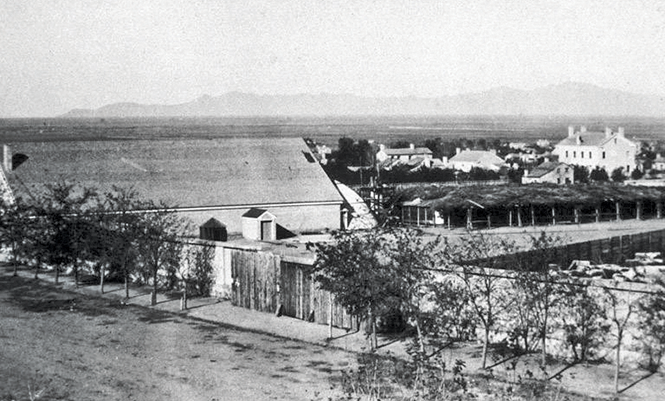
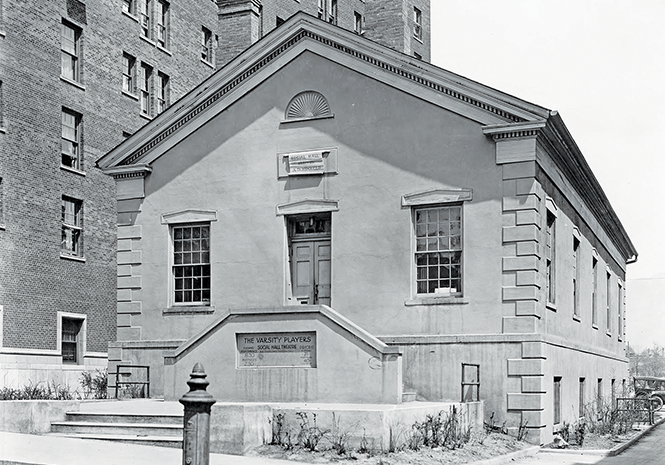
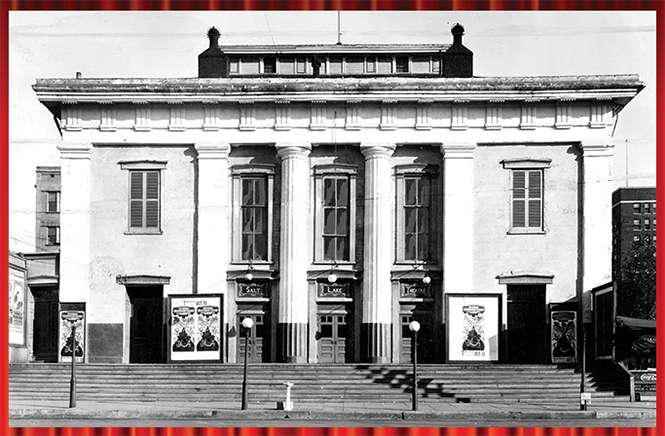
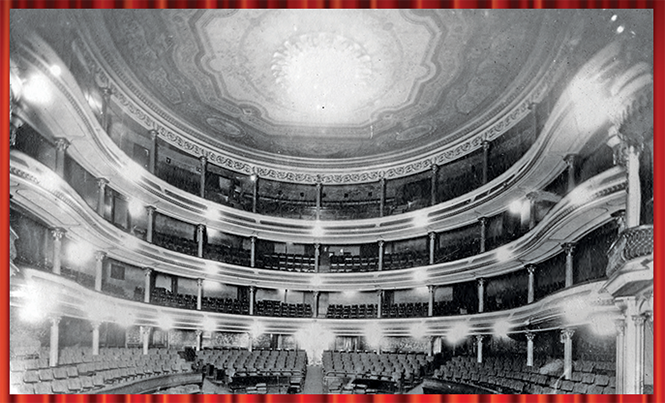
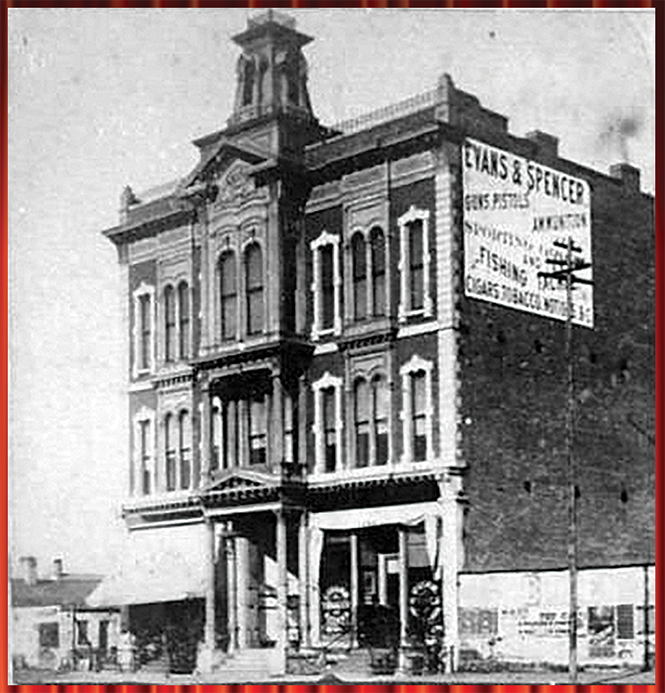
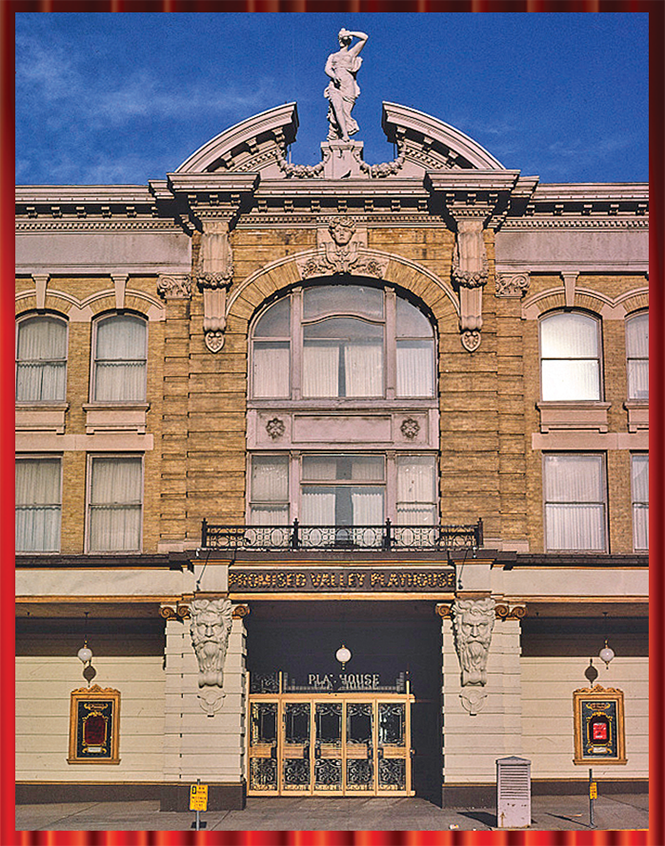

![“[Theater] changes. It morphs, it evolves, I think, as the world changes and morphs and evolves.”—Karen Azenberg - ALEX WEISMAN](https://media1.fdncms.com/saltlake/imager/u/blog/19120320/karen_azenberg_-_credit_alex_weisman.png?cb=1702427408)
